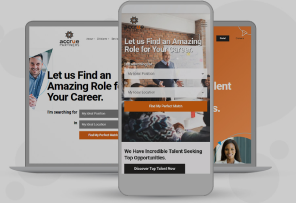When it comes to digital marketing, everything can change quickly. That's why it's vitally important to keep your company's website up-to-date and providing quality information. After all, that website serves as the cornerstone of a company's online presence.
You need to ensure that your organization's website is not only visually appealing but also functionally efficient, and that it stays that way through all its iterations and changes over the years. However, understanding the costs associated with web design and what you receive for the price can be complex.
All too often, companies try to use build-it-yourself platforms and then struggle when they don't work correctly or provide needed functionalities and options. Working with a web design company is the far better choice. Here's what you need to know.
The Importance of a Well-Designed Website
There's a lot of value in a well-designed website. Your company's website is often the first point of contact for potential customers, making a lasting impression that can influence their perception of your brand. An aesthetically pleasing, user-friendly, and responsive website not only enhances a user's experience, but it also builds trust and credibility for your business.
Many Factors Influence Web Design Costs
Understanding web design costs involves recognizing all the main factors that contribute to the investment. These factors can vary widely based on the scope, complexity, and goals of the project, so it's imperative that you talk to your web design firm about the details of your project and what you want your site to look like. For example, you'll want to consider:
- Project Scope and Complexity: The size and complexity of your website significantly impact the overall cost. A simple site will cost less than a complex e-commerce platform.
- Design and Branding: Investing in a visually appealing and cohesive design that aligns with your brand is essential. This includes graphic design, custom illustrations, photography, and other visual elements.
- Functionality and Features: E-commerce capabilities, content management systems (CMS), customer portals, and other advanced features contribute to the complexity of any web design project. Clearly defining the required functionalities will help in estimating costs.
- Responsive Design: It's vital to ensure your website is responsive across various devices. Responsive design ensures a seamless user experience on smartphones, tablets, and desktops.
- Content Creation and SEO: Quality content is key to attracting and retaining visitors. Costs associated with content creation, including copywriting, graphics, and SEO optimization, should be factored into your budget.
- Maintenance and Updates: Building a website is not a one-time investment. Regular maintenance, updates, and security measures are essential to keep your site functioning optimally.
A Cost Breakdown Helps Provide Clarity
Once you understand the key factors influencing web design costs, the next step is to consider what your budget allocation may look like. Here's a realistic breakdown example:
Design and Development
Approximately 40-50% of your budget is typically allocated to the actual design and development of the website. This includes the creation of wireframes, design mock-ups, coding, and testing.
Content Creation and SEO
Allocating 20-30% of your budget to content creation and SEO ensures that your website not only looks great but also ranks well in search engine results. This includes keyword research, content creation, and ongoing optimization efforts.
Functionality and Features
Depending on the complexity of your website's functionalities, 20-30% of your budget may be dedicated to implementing specific features and ensuring they function seamlessly. E-commerce capabilities, for example, often fall into this category.
Maintenance and Updates
Setting aside 10-20% of your budget for ongoing maintenance, updates, and security measures is essential. Regular upkeep ensures that your website remains secure, up-to-date, and capable of adapting to evolving technology. You don't want to get left behind by the competition.
Maximizing Your Web Design Investment
While understanding the value of web design costs is crucial, you can also take steps to maximize your investment. These include:
- Clearly Defining Objectives
- Prioritizing Features
- Investing in Quality
- Planning for Ongoing Maintenance
When you do those four things, you have a productive relationship with your web design company, get more for your investment, and have a stronger, higher-quality website you can be happy with for years to come. That can encourage customer engagement, and improve your business' bottom line.
The Bottom Line on the Cost of Web Design
A well-designed website is a non-negotiable asset for any company, and understanding the intricacies of web design costs makes it easier for you to make informed decisions that align with your budget and objectives. Remember, a quality website is not just an expense. It's a strategic investment in the future success of your brand.



